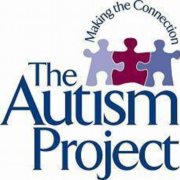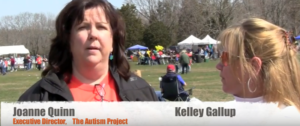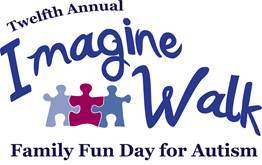How did you first get involved with The Autism Project (TAP)?
My youngest son, Patrick, was diagnosed with autism in 1999. His original team of teachers and therapists at his school were some of the founding mothers of The Autism Project. It was their mission, and it remains ours, to educate teachers and parents on how to educate people with autism in the public schools. They were also committed to supporting parents in their role to raise a child on the spectrum and to keep the parents as key members of their child’s team.
What do you think is the most common misconception about individuals with an Autism Spectrum Disorder (ASD)?
I think there is a misconception that all people with autism spectrum disorder act, live and breathe the same. Also, all are severely impaired or a servant. None of this is true. We all have our strengths and challenges regardless of where we land!
Tell us about The Autism Project’s unique, collaborative approach between parents, teachers, and professionals.
The belief that we need to work together on all aspects of our work was forged by our founding mothers. Bringing everyone together on an even playing field ensures we all do better because we see and learn to appreciate different views. Also, our children with ASD (of all ages) are so unique we need to have multiple interpretations of their actions to develop the best means of support for them.
Many people don’t realize that The Autism Project’s programs and services aren’t only for children and teens on the autism spectrum! Tell us about how TAP can help all children and teens with social emotional learning challenges.
TAP has grown and after 20 years of educating the community on autism and evidence-based practices. We’ve seen an increase in the number of people with challenges that would benefit from our strategies, as well as new programming for all children with social emotional challenges that will benefit people with ASD. So, we are now supporting more children and their families.
What is your greatest challenge as an Executive Director? What is the best part of your job?
My greatest challenge is the universal stress for all EDs to sustain programming or to expand programming to meet the needs of the community. The best part of my job is seeing the connections being made and they come in so many different ways! It warms my heart to see two moms connect after a training we do. Often this is the first place they are where someone else understands what they are experiencing. They aren’t alone anymore. Also, seeing the children be more successful each year and they grow to more independent individuals at home, in the community and at school is so important.
What does a typical workday look like? Do you have a daily routine or ritual that you swear by / that helps you stay focused?
Too funny, you actually think I can put that into words! The fact that my typical day is never the same is another best part of my job. I get to listen to staff, families and the community and interpret what we can do to meet their needs and then develop a plan of what we can do. It’s creative, fulfilling and oh so stressful! But when we land a grant or funding for a program and we get it up and running, there’s no greater joy for me.
Do you have a favorite quote or mantra that inspires you?
Think of Your Budget as Your Policy Statement! Basically, put your money where your mouth is!
What is one thing you wish more people knew about ASD and its impact on individuals and families?
There’s a poem in the disability community that some parents like called “Welcome to Holland”. It’s a story of the change of expectations when a child is born with a disability. It’s a big shift for families and unfortunately, there still isn’t a clear road map for families to follow in terms of treatment or expectation of what their child’s future will look like. Our dreams for our child with ASD are the same as for our other children, it’s now going to look and be different. It’s going to take a lot of time, effort and patience to learn how to help the child be their best person across the lifespan. This can be very stressful and it often comes in ebbs and flows. But, there are also such great moments of joy and accomplishment that we celebrate.
How can our community get involved in the upcoming Imagine Walk?
We are asking people to register for our Walk. They can go to our website at www.theautismproject.org to register and to set up their individual fund raising page.
Where can we go to learn more about TAP?
We have a very active social media community. Our FB and Website are the best areas to look, or call the office to speak with one of our Family Support Specialists. They can answer individual questions and are a wealth of information on resources.
Click here to add your own text





